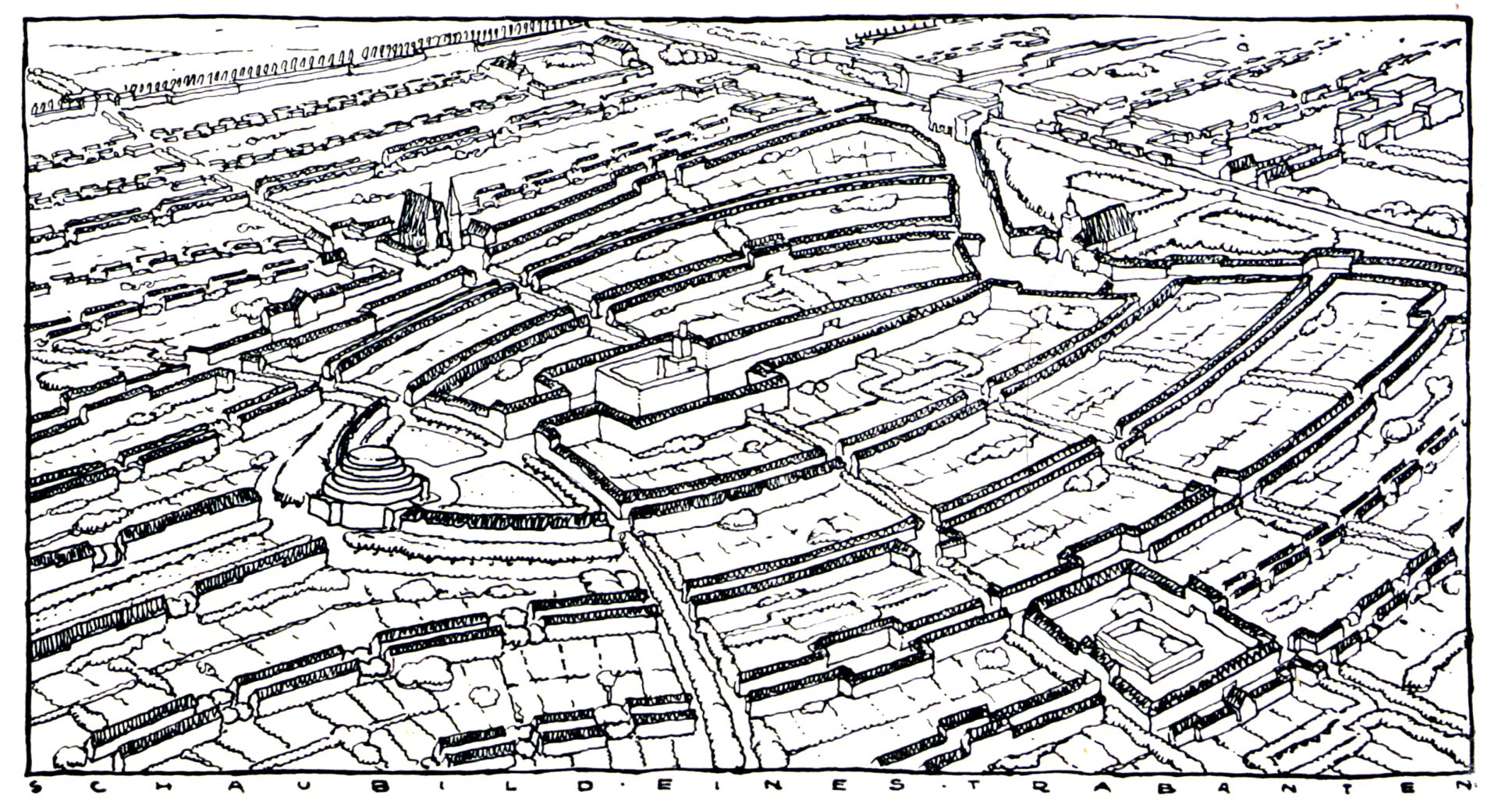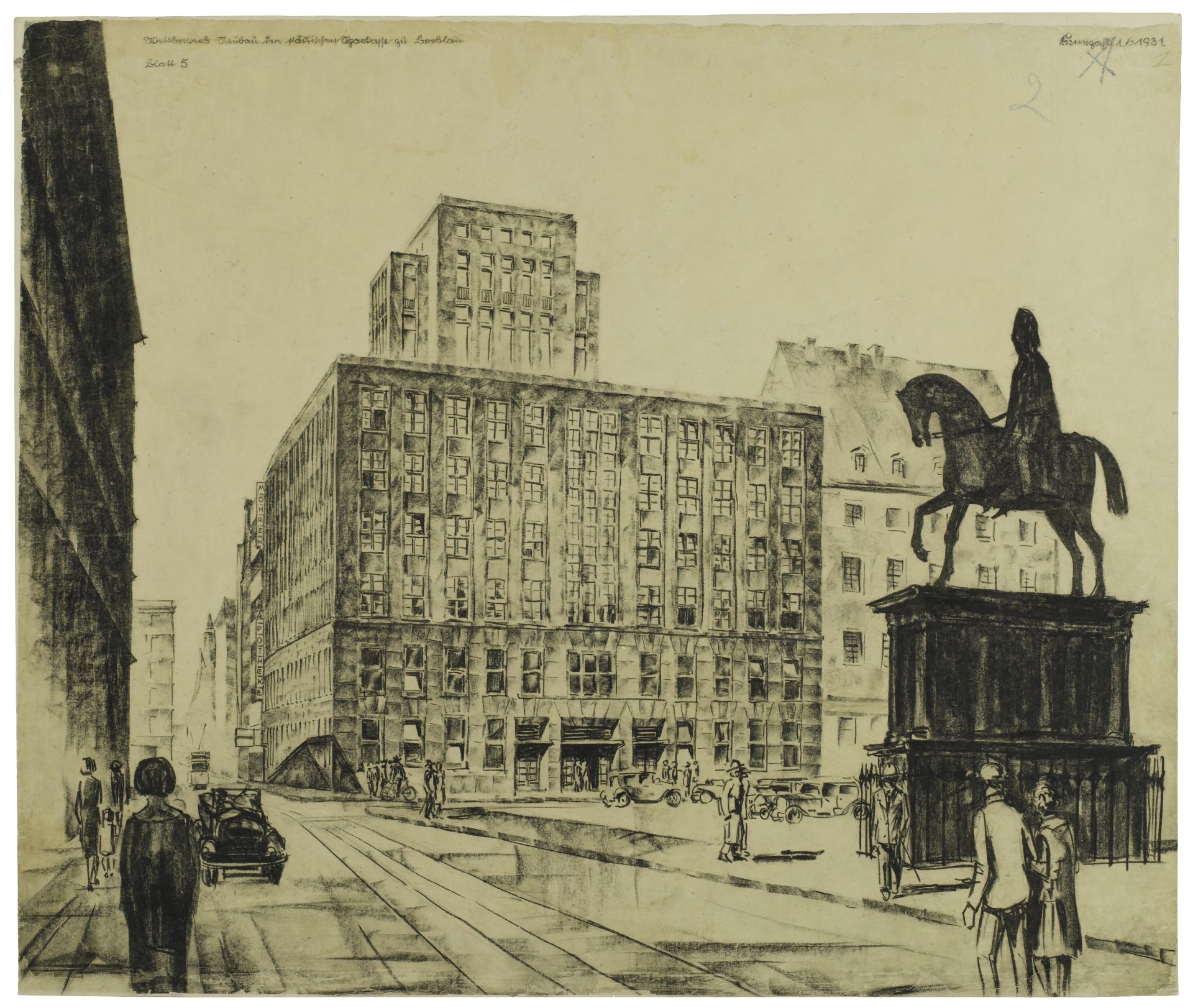In 1925, a poet, essayist and writer Josef Ponten wrote: The architecture is truly royal and majestic, but it depends on so many mundane and common conditions! […] Its story is dramatic, and the earliest sense of the word already contains the whole experience associated with it […]. And the drama very often, one might say almost always, turns into a tragedy, because the intention of the action and the work is rarely or almost never fully realized, due to many opposing forces coming between desire and fulfillment, because the big picture reflected in stone rarely corresponds to the small image in the architect’s mind. What remains is the architecture in the idea, the imagination, the picture, on paper – the architecture that wasn’t built. And it’s usually architecture of the most beautiful kind!

Max Berg with the collaboration of Richard Konwiarz, design for a new town hall in the form of a skyscraper on the site of the former municipal gasworks on Powstańców Warszawy Square, twenty-storey version, view from the square, 1919–1921
From the beginning of the 20th century until the end of the 1920s, Wrocław’s architects created many designs that were not implemented, but were nevertheless of great importance for the development of the city’s architecture and urban planning. They were repeatedly discussed all across Germany and became an important contribution to the further development of the modern city.

Ernst May, Herbert Boehm, layout of Wojszyce as an example of a satellite settlement, project submitted to the competition for the extension of Wrocław and its suburban municipalities, 1921–1922, „Der Städtebau” 1922
In Wrocław, the modernization process was particularly important due to the city’s intention to expand and broaden its limits. In the 1920s, Wrocław was one of the most neglected of the large German cities in terms of urban development. The small size of the agglomeration and the resulting high density of housing meant that the health and hygiene conditions in the city were disastrous, and the acute shortage of sufficient housing had a negative impact on the social situation.
The city authorities tried to remedy these problems by initiating a series of projects to be carried out by the Municipal Building Department. However, in the face of a very bad economic situation after World War I, many of these ideas remained on paper, in the theoretical stage, never to be realized, or to be realized much later. For example, the traffic route in place of downtown part of the Oława river along Kazimierza Wielkiego, Nowy Świat and Oławska Streets was not built until after World War II. Almost all architects who were active in Wrocław at the time, as well as artists from other areas of Germany, were involved in design competitions organized by the city. The most important designs for Wrocław were created by prominent architects who are now considered pioneers of modern architecture and urban planning: Max Berg, Hans Poelzig, Adolf Rading and Ernst May.

Author unknown, competition design for the building of the Municipal Savings Bank, transformation of communication between the Market Square and Solny Square and creation of an east-west route, 1929, Museum of Architecture in Wrocław
The exhibition brings together surviving architectural drawings and models, as well as reproductions of materials preserved only in publications. In addition to urban planning proposals related to the concept of urban expansion, they show competition designs that were not appreciated by the jury, but from today’s perspective seem very interesting and innovative. They sometimes testify to the fact that the trends prevailing in Wrocław’s architectural community were more conservative than is currently believed, seeing Wrocław at the time as a city of the modern movement. In many other cases they prove that the primary reason for not implementing them was economic. Together they constitute, as Josef Ponten put it, a fragment of our modern history, hitherto known only to the privileged few.’
Curators: Ph.D. Jerzy Ilkosz, Jolanta Gromadzka
Exhibition design and visual identity: Renata Stahl-Wojtowicz
Translations: Grzegorz Piątkowski
Producers: Wiktoria Litwinowicz, Wiesława Moniak
Set-up Team: Jerzy Brunner, Krystyna Piwowarska-Kerber, Piotr Szyszkowski
Communication: Marta Czyż, Kalina Soska